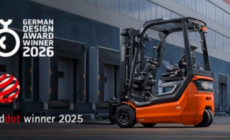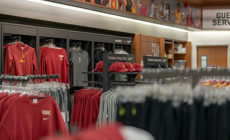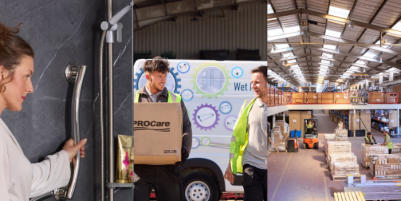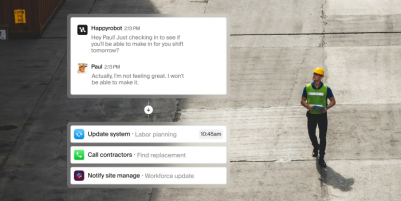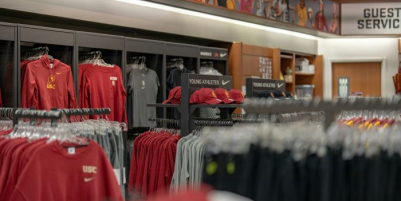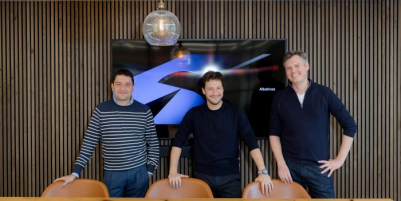-
AI startup Onton raises $7.5M to reinvent the way the world discovers and decides what to buy - November 26, 2025
-
Forklift Market Positions for Recovery as Confidence Expected to Build from 2026 - November 26, 2025
-
PROCare achieves 300% order capacity increase and 99% picking accuracy with Forterro’s ERP solution, Orderwise - November 26, 2025
-
DHL boosts operational efficiency and customer communications with HappyRobot’s AI Agents - November 25, 2025
-
STENA LINE TEAMS UP WITH CAMERA TELEMATICS TO DRIVE SAFETY IMPROVEMENTS AT IRISH SEA PORTS - November 25, 2025
-
Another design award for Toyota’s lithium-ion Traigo_i counterbalanced forklift - November 21, 2025
-
Stuut Technologies Raises $29.5 Million Series A Led by Andreessen Horowitz to Automate Accounts Receivable Work - November 20, 2025
-
INCREASED DIGITAL INVESTMENT REQUIRED TO KEEP PACE WITH 2026 CUSTOMS CHANGES - November 19, 2025
-
FULFILMENT SOLUTIONS FOR SPORTS MERCHANDISE: KEEPING OUR EYE ON THE GAME - November 19, 2025
-
COMPLEX, COSTLY & CONFUSING – THE END OF DE MINIMIS - November 19, 2025
BITO Storage Systems, the UK subsidiary of the international BITO Lagertechnik GmbH group and leading provider of storage and picking solutions, will be exhibiting at Tomorrow’s Warehouse.
Taking place on 15th May 2025 at the CBS Arena, Coventry, Tomorrow’s Warehouse is a one-day, free-to-attend conference and exhibition, presenting a range of solutions to boost warehouse performance and flexibility.
BITO’s experts will be there to discuss the latest intralogistics techniques and systems created from shelving and racking, live storage, bins and containers, as well as other materials handling equipment. These are suited to a broad array of applications – whether for SMEs seeking simple storage or large operations creating integrated systems.
For the warehouse of tomorrow, as is the case with facilities today, companies need to invest in intralogistics systems that will help fulfil orders as efficiently, productively and accurately as possible. More than ever, warehouse equipment needs to be reliable and have the flexibility to adapt easily to changing business circumstances.
Six ways to start shaping tomorrow’s warehouse in six ways
Any company seeking to ensure continuity of high service levels, whatever logistics challenges come their way, needs to start shaping tomorrow’s warehouse. Here are six areas to consider:
1. Handling growing online order volumes for broader mixes of SKUs, and often with shorter lead times, places enormous pressure on warehouse operations to improve order-picking productivity. Peaks are becoming more frequent, but also often less predictable. Warehouses need the flexibility to rapidly scale operations appropriately. A combination of ‘middle-ground mechanisation’, such as carton and pallet live storage, and intelligent software can provide a first step on the automation ladder, while at the same time giving scaleablity and agility. This is particularly important in the fast evolving home delivery sector.
2. Dynamic ‘pick and put’ processes can be created using software to enable a waveless batching system that removes the need for sortation equipment. By considering picking and putting as part of a continuous integrated process, a dynamic batching solution can be created, without the need for a picking buffer. Software can continuously monitor resource utilisation and dynamically adjust work orders and flows to reduce cycle time, labour and unit costs. This helps to minimise the peaks and valleys associated with traditional wave-based fulfilment solutions.
To help fulfil home delivery orders, ‘put wall’ picking systems involve picking several orders at once and taking them to a ‘put wall’, which is essentially a bay of shelving that allows the picker to consolidate the items into containers, such as BITO XL open-fronted containers, in pigeonhole positions for each order. Once an order is complete the light switches on to inform the packer on the other side of the shelving that it’s ready and waiting. The packer can then pull the container holding the complete order through for it to be packed as one delivery.
3. The difficulties and increasing costs of adding staff to handle growing volumes can be addressed by automation in the form of high density storage and retrieval systems, making use of high quality racking. The application of robots in warehousing adds greater flexibility to automation’s advantages. Order picking is likely to see more of its manual aspects being replaced by automated goods to picker systems. But there will also be a demand for low cost automation, involving simple technology, such as mobile robots and internal transport systems, like BITO’s LEO. Such systems enable the repurposing of people involved in moving goods around the warehouse to more productive functions, such as picking orders.
4. The integration of AI (Artificial Intelligence) and big data will play central roles in the logistics industry by significantly increasing efficiency and precision in the supply chain. Unlike traditional AI systems, which are primarily used to analyse and interpret data, Generative AI generates original ideas and works through the use of algorithms and deep neural networks. This technology will transform warehouse operations by addressing challenges such as reducing stock-outs, optimising supply chains and improving resource allocation. The combination of Generative AI with the Internet of Things (IoT) and Big Data will make it possible to efficiently solve increasingly complex problems and there will be major improvements in the areas of demand forecasting, order fulfilment and sustainability.
5. While automation and digitalisation become more popular, lower cost solutions will continue to be required in the warehouse of tomorrow to help all sizes of companies to improve fulfilment operations and meet the need for flexibility. These might include multi-tier shelving, adapting pallet racking for picking small items, installing live storage flow shelves to improve pick face density, investing in bins and containers for efficient storage and delivery – including foldable containers.
6. Sustainable logistics is fast becoming essential for the long-term success.Compliance with ecological and ethical standards is a central business strategy for many companies, which will prefer to work with suppliers of warehouse equipment who can demonstrate that they are actively taking steps to improve their own sustainability. The use of recyclable and biodegradable materials in plastic containers, for example, supports the circular economy and promotes the responsible use of resources.
At BITO, we have a team of experts with a tremendous amount of experience in providing one stop shop intralogistics solutions – whether it is for small-scale installations or large distribution centre integrations. Visitors to Tomorrow’s Warehouse are invited to see these solutions in working operation at the BITO’s Experience Centre, which is located in Hemdale Business Park, Nuneaton – close to the CBS Arena.







